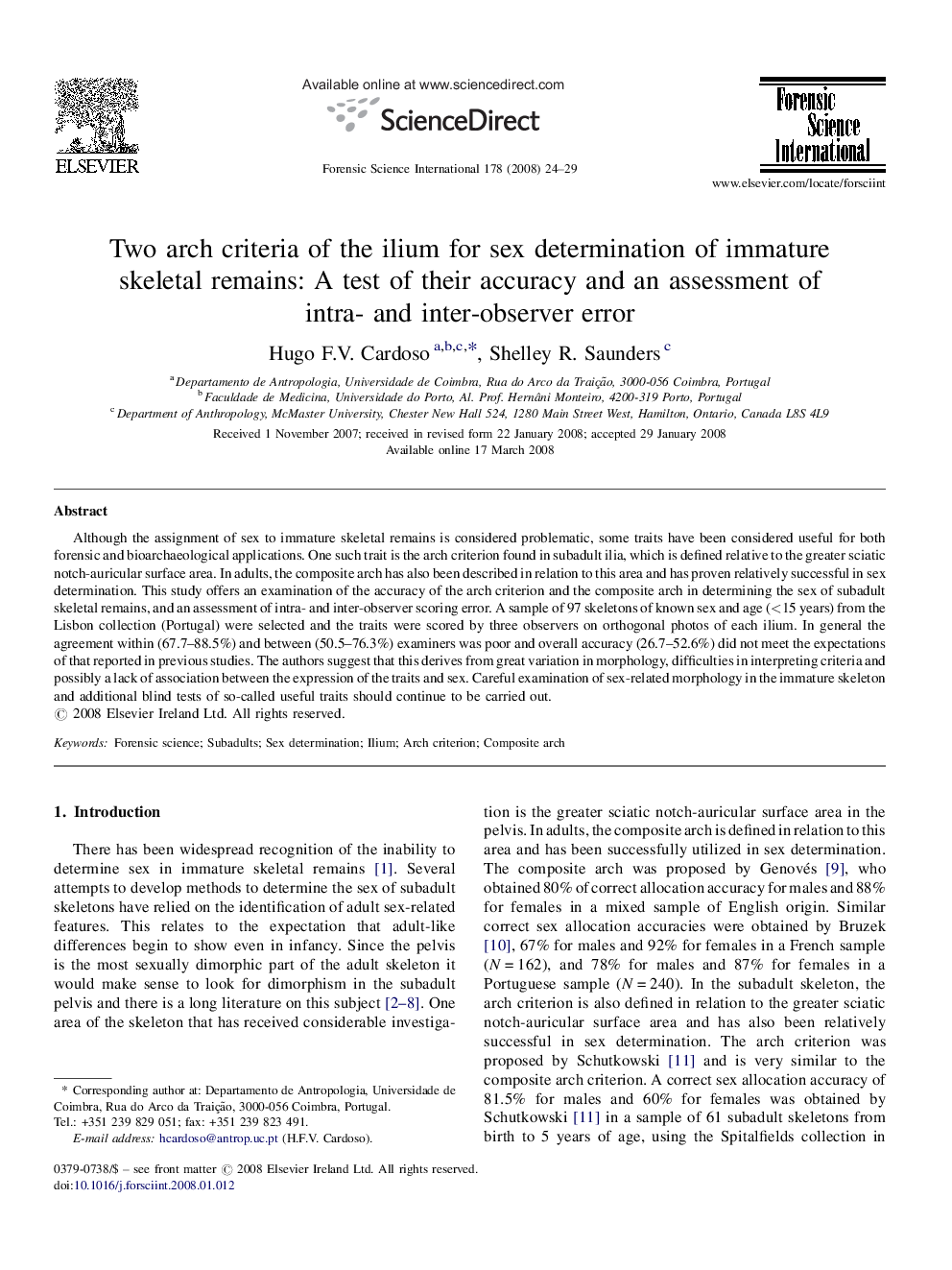| کد مقاله | کد نشریه | سال انتشار | مقاله انگلیسی | نسخه تمام متن |
|---|---|---|---|---|
| 97838 | 160511 | 2008 | 6 صفحه PDF | دانلود رایگان |

Although the assignment of sex to immature skeletal remains is considered problematic, some traits have been considered useful for both forensic and bioarchaeological applications. One such trait is the arch criterion found in subadult ilia, which is defined relative to the greater sciatic notch-auricular surface area. In adults, the composite arch has also been described in relation to this area and has proven relatively successful in sex determination. This study offers an examination of the accuracy of the arch criterion and the composite arch in determining the sex of subadult skeletal remains, and an assessment of intra- and inter-observer scoring error. A sample of 97 skeletons of known sex and age (<15 years) from the Lisbon collection (Portugal) were selected and the traits were scored by three observers on orthogonal photos of each ilium. In general the agreement within (67.7–88.5%) and between (50.5–76.3%) examiners was poor and overall accuracy (26.7–52.6%) did not meet the expectations of that reported in previous studies. The authors suggest that this derives from great variation in morphology, difficulties in interpreting criteria and possibly a lack of association between the expression of the traits and sex. Careful examination of sex-related morphology in the immature skeleton and additional blind tests of so-called useful traits should continue to be carried out.
Journal: Forensic Science International - Volume 178, Issue 1, 10 June 2008, Pages 24–29